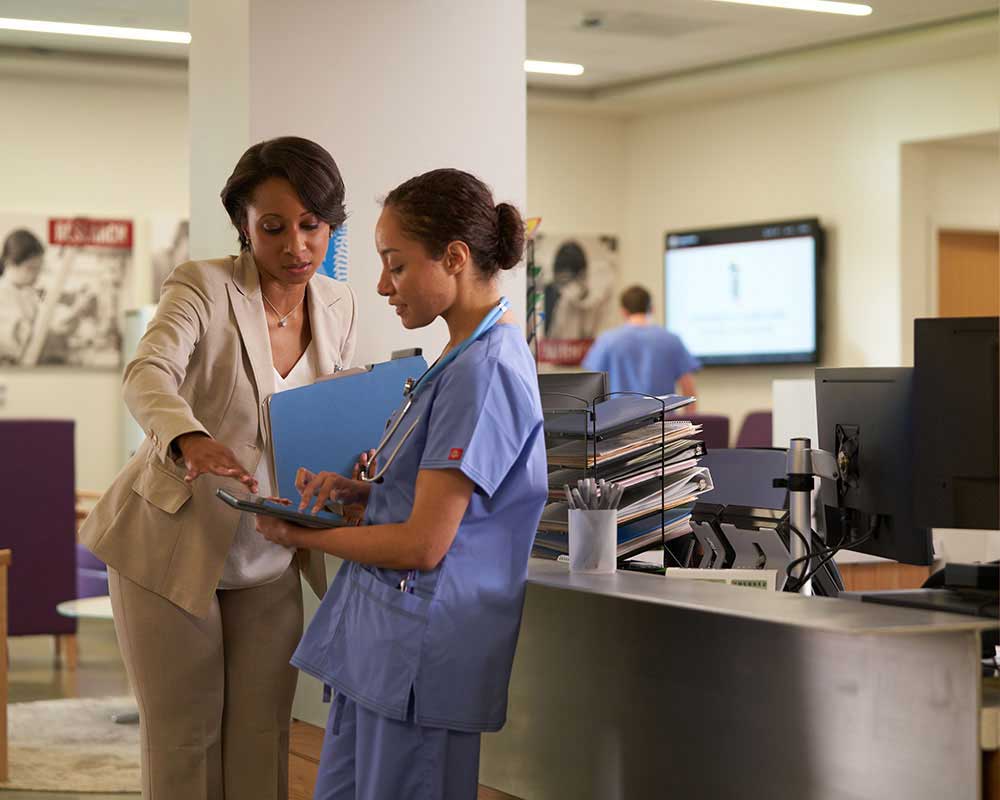How to Enhance Performance in Medical Administration with Modern Equipment
Wiki Article
Ideal Practices in Medical Management for Improving Effectiveness and Minimizing Prices
In the ever-evolving landscape of healthcare, the search of finest methods in medical management is vital for boosting effectiveness and curbing expenses. By incorporating sophisticated innovations such as electronic wellness records and telemedicine, health care service providers can streamline procedures and enhance individual treatment. Technology alone is not a panacea; enhancing resource allowance and cultivating collaborative interaction amongst care teams are equally crucial. As organizations aim to stabilize top quality and price, what techniques should be focused on to achieve these twin goals? The responses to these inquiries hold the key to a more lasting health care system.Leveraging Advanced Technology
In today's quickly advancing health care landscape, leveraging innovative technology is no more optional but vital for efficient medical management. The combination of digital services right into health care systems has changed the means centers operate, streamlining processes and improving person treatment. Electronic Health Records (EHRs) are crucial, supplying comprehensive person data that can be accessed instantaneously by accredited personnel, thus lowering redundancy and minimizing mistakes. By systematizing patient info, EHRs eliminate the demand for difficult paperwork and facilitate seamless communication among doctor.Telemedicine is one more technical improvement that has actually transformed individual interaction. It uses convenience for both patients and healthcare specialists by allowing remote assessments, which can decrease the demand for in-person check outs and enhance appointment organizing. Additionally, telehealth platforms can extend medical care accessibility to rural or underserved areas, bridging spaces in care shipment.
Moreover, making use of Expert system (AI) and machine learning is coming to be progressively widespread in predictive analytics, enabling very early detection of possible health and wellness issues and even more informed decision-making. These innovations, when integrated effectively, can improve analysis accuracy and personalize patient therapy strategies, eventually leading to boosted medical care end results and operational efficiency.
Optimizing Resource Allocation
Efficient resource allowance is critical for optimizing the efficiency of clinical management. By strategically handling resources such as personnel, tools, and finances, health care centers can significantly improve their functional performance, boost patient results, and lower unnecessary expenses. The initial action in enhancing resource allowance includes performing a detailed analysis of current possessions and identifying areas where resources may be underutilized or overextended. This assessment needs to be data-driven, making use of metrics and analytics to inform decision-making processes.Prioritizing source allotment based on client needs and solution needs is vital. Carrying out flexible staffing models can also maximize labor resources by adjusting workers appropriation in reaction to fluctuating individual quantities.
Monetary resources should be diligently checked and alloted with critical foresight to support both temporary operational needs and long-term institutional goals. This includes investing in training programs that improve staff proficiencies and adopting energy-efficient practices that minimize operational expenses (medical administration). Eventually, an optimized source allotment approach promotes a sustainable healthcare atmosphere that is receptive, efficient, and monetarily sensible
Streamlining Process Procedures
When medical care centers purpose to boost functional efficiency, improving operations processes comes to be a pivotal focus. Efficient workflows reduce redundancy, eliminate unneeded steps, and enhance sychronisation amongst healthcare experts. This approach not only increases solution delivery but likewise boosts the quality of client treatment.
Following, modern technology combination plays a substantial role in streamlining operations. Executing electronic read this post here health records (EHRs) and computerized medical professional order access (CPOE) systems lowers paperwork, decreases human error, and ensures details comes to all pertinent workers. Additionally, leveraging telemedicine platforms can streamline patient examinations and follow-ups, decreasing the pressure on physical framework.

Inevitably, structured process cause set you back reductions and improved patient complete satisfaction, cultivating an extra lasting health care environment.
Enhancing Information Monitoring
Building upon structured workflows, maximizing data monitoring comes to be a crucial part in progressing medical care administration. Reliable data monitoring systems are crucial for preserving precise person records, enhancing decision-making, and making sure conformity with regulatory requirements. By applying robust information management remedies, health care facilities can improve the high quality of person care while concurrently reducing functional prices.One trick facet of improving information monitoring is the combination of sophisticated electronic wellness document (EHR) systems. These systems help with the smooth exchange of individual info throughout various departments, decreasing duplication of tests and lessening mistakes. A properly designed EHR system supports data analytics, making it possible for doctor to determine trends and make educated decisions pertaining to patient care.
Moreover, guarding patient data is critical. Taking on extensive cybersecurity measures, consisting of security and normal audits, makes sure the integrity and confidentiality of sensitive info. This not just protects clients however likewise preserves the organization's track record.
Spending in team training is an additional critical factor. Informing medical care professionals on information management techniques enhances their capability to properly make use of modern technology, causing enhanced patient outcomes. Finally, improving data monitoring through sophisticated innovation and detailed training is important for achieving performance and price decrease in medical administration.
Fostering Collaborative Communication
A vital component in advancing clinical administration is promoting joint communication amongst healthcare professionals. Reliable interaction is extremely important for ensuring seamless individual treatment, enhancing treatment end results, and minimizing errors. By encouraging open dialogue and control throughout multidisciplinary this page groups, healthcare companies can boost their operational efficiency and minimize unnecessary expenses.Central to this technique is the assimilation of interaction modern technologies such as digital wellness records (EHRs) and safe messaging systems, which assist in the fast exchange of crucial client information. These devices allow healthcare service providers to gain access to and share information in actual time, ensuring that all staff member are informed and lined up in their decision-making procedures. In addition, regular group conferences and interdisciplinary rounds can additionally advertise a society of collaboration and liability.
Training programs focused on boosting interaction skills are also vital. Ultimately, fostering collaborative communication leads to enhanced medical care delivery and expense savings.

Conclusion
Incorporating innovative innovation, such as electronic health records and telemedicine, alongside optimized resource appropriation and structured operations processes, is vital for improving effectiveness in medical management. Reliable information management and cultivating joint interaction amongst healthcare teams are vital for click reference decreasing redundancies and enhancing care high quality. By focusing on preventive treatment and involving in quality enhancement campaigns, healthcare companies can accomplish significant cost savings and boosted individual outcomes, consequently guaranteeing lasting healthcare shipment in an increasingly complicated environment.Report this wiki page